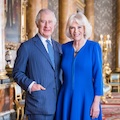Historic chairs to be reused for the Coronation
Published
By tradition, ceremonial chairs and thrones are used for the different stages of the Coronation Service. Read more about the Chairs that will feature in Their Majesties' Coronation on 6th May 2023.

In addition to St Edward’s Chair (Coronation Chair), which is used for the moment of crowning, The King and The Queen Consort will be seated in Chairs of Estate and Throne Chairs at different points during the service.
In the interest of sustainability, Their Majesties have chosen to use Chairs of Estate and Throne Chairs from the Royal Collection made for previous Coronations. These have been conserved, restored and adapted as required.
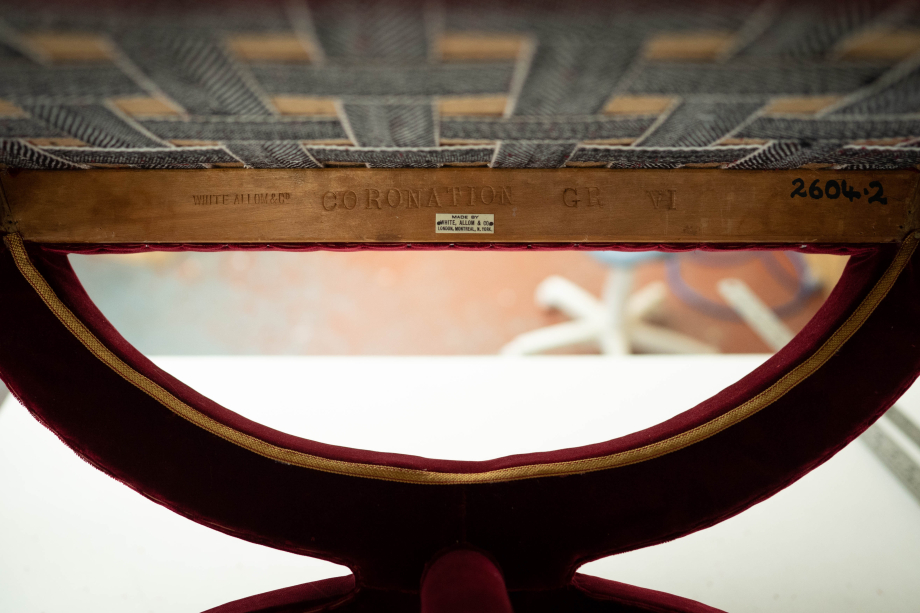
The Chairs of Estate which will be used on the 6th May 2023 were made in 1953 by the London firm White, Allom and Company for the Coronation of Queen Elizabeth II on 2nd June 1953.
Their Majesties will be sat in the Throne Chairs for the Enthroning and the Homage. These chairs were made for the Coronation of King George VI and Queen Elizabeth on 12th May 1937.
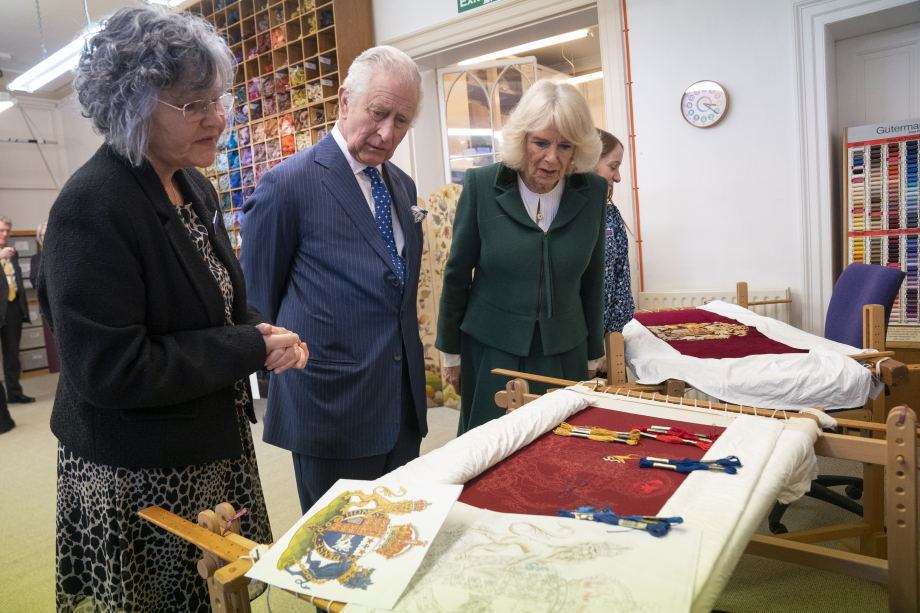
Earlier this year, Their Majesties visited the Royal School of Needlework to meet craftspeople and embroiders who contributed to the project. As The Duchess of Cornwall, Her Majesty The Queen Consort became Patron of the Royal School of Needlework in 2017.
Chairs of Estate
Her Majesty Queen Elizabeth II used her Chair of Estate during the 1953 service, while the companion Chair of Estate for Prince Philip, The Duke of Edinburgh, was not used at the Service itself but was delivered to Buckingham Palace, where both Chairs have been on display in the Throne Room for many years.
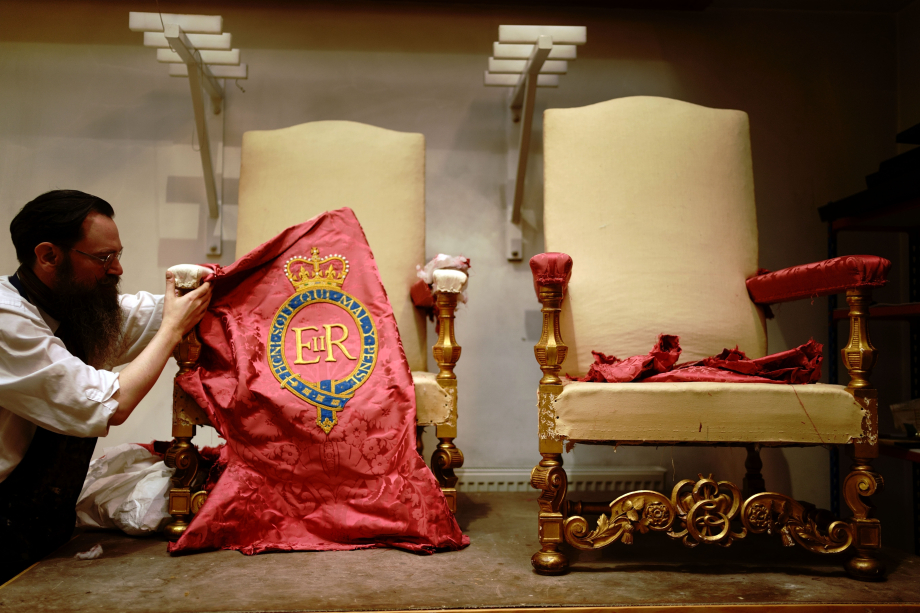
The Chairs of Estate are made from carved and gilded beechwood in the seventeenth century-style which was used for earlier Chairs of Estate. The cyphers of Queen Elizabeth II and Prince Philip are featured in the carving of the giltwood stretcher joining the front legs, together with the national emblems of a rose, thistle, and shamrock.
The Chairs of Estate will be used during the early parts of the Service and for the Coronation of Her Majesty The Queen Consort.

In preparation for the Coronation, Gilding and Furniture Conservators from the Royal Collection Trust have cleaned, restored and consolidated the giltwood frames. New silk damask was woven by the Humphries Weaving Company, Suffolk to the same pattern with which they were originally upholstered. This was to allow for the cyphers of The King and The Queen Consort to replace those of Queen Elizabeth II and Prince Philip, which were removed and will be kept in the Royal Collection.
The new cyphers for the Chairs of Estate have been hand embroidered by the Royal School of Needlework, and created with cloth of gold, woven with a metal thread. The cloth of gold was then embellished with gold metallic threads. Upon completion, the cyphers were applied onto the silk damask using the appliquè technique. The upholstery was completed by the Royal Household’s upholsterers, including the re-use of the original braid and trimmings.
Throne Chairs
Made by White, Allom and Company, in a seventeenth century style which in turn was based on X-framed Tudor stools. The Chairs were upholstered in crimson velvet and applied with the Royal Arms of King George VI and Queen Elizabeth.
In preparation for the Coronation, the Chairs have been conserved by the Royal Collection Trust’s Furniture Conservators. The crimson silk velvet has been replaced with new velvet and trimmings and the chairs reupholstered by the firm of AT Cronin Workshop Ltd.

New silk braid and trellis fringe, replicating the original trimmings of the Throne Chairs has been woven by Heritage Trimmings Ltd of Derby. The silk was produced by The Humphries Weaving Company, Suffolk, and the silk for the fringe has been specially dyed by Gainsborough Silks, Suffolk. The Royal School of Needlework conserved the original embroidered Coat of Arms on His Majesty’s chair before transferring it onto the new velvet.
In addition, the new Coat of Arms of The Queen Consort has been hand embroidered on Her Majesty’s Throne Chair using the silk shading technique, which has been applied to the new velvet.
St Edward’s Chair (Coronation Chair)
Made over 700 years ago, from Baltic oak and first used at the Coronation of King Edward II. During Their Majesties Coronation on May 6th, His Majesty will be crowned King on St Edward’s Chair.

Congregation Chairs
The Chairs have been covered in blue velvet and feature the cyphers of Their Majesties.

The frames of several of the Congregation Chairs were made by six young graduates from The Prince’s Foundation at the Snowdon School of Furniture at Highgrove using traditional materials and techniques to create the chairs with sustainable British oak. This forms part of the wider work carried out by The Prince’s Foundation to preserve traditional skills that are at risk of being lost.
Following the Coronation, the Chairs will be auctioned, and the proceeds will be donated to charity.

Related content
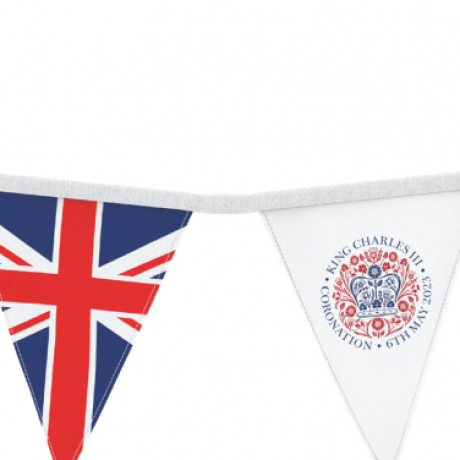
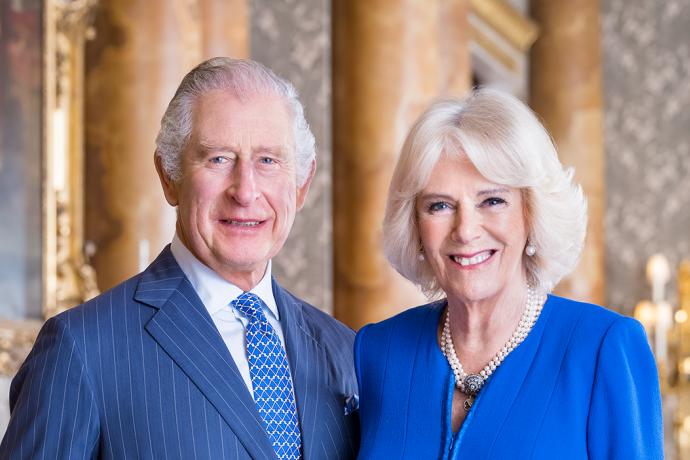




The Coronation: history and ceremonial

The Queen's Coronation Oath, 1953
The things which I have here before promised, I will perform and keep. So help me God.
A speech by The Queen on her Coronation Day, 1953
Throughout this memorable day I have been uplifted and sustained by the knowledge that your thoughts and prayers were with me.

